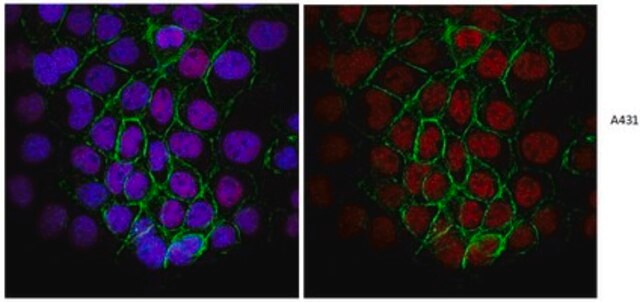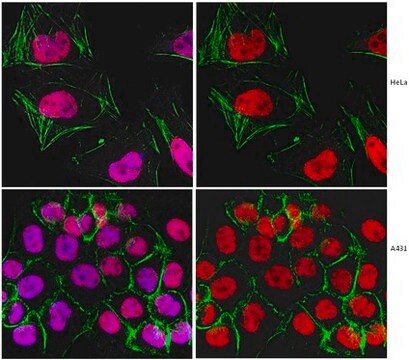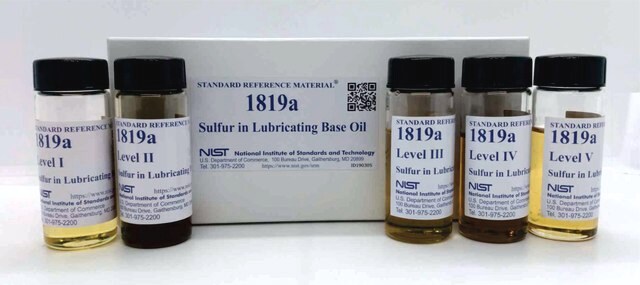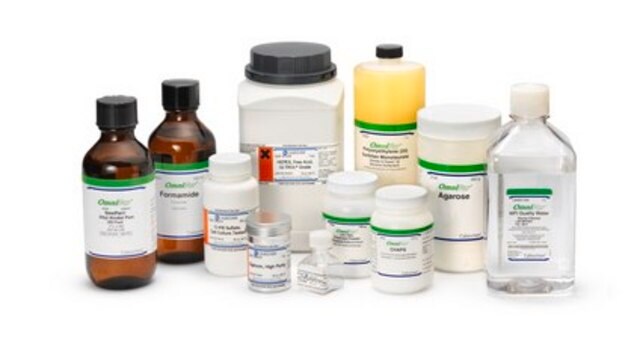04-1481
Anti-RPA2 p34 Antibody, clone RPA20 1-46
from mouse, clone RPA20, clone 1-46
Sinónimos:
RF-A protein 2, RP-A p32, RP-A p34, Replication factor A protein 2, replication protein A2 (32kD), replication protein A2, 32kDa, Replication protein A 32kDa subunit, RF-A, replication factor-A protein 2, p32, p34, RPA2, REPA2, RPA32.
About This Item
Productos recomendados
origen biológico
mouse
Nivel de calidad
forma del anticuerpo
affinity isolated antibody
tipo de anticuerpo
primary antibodies
clon
1-46, monoclonal
RPA20, monoclonal
reactividad de especies
human, mouse
envase
antibody small pack of 25 μg
técnicas
western blot: suitable
isotipo
IgG1κ
Nº de acceso NCBI
Nº de acceso UniProt
Condiciones de envío
ambient
modificación del objetivo postraduccional
unmodified
Información sobre el gen
human ... RPA2(6118)
Descripción general
Especificidad
Inmunógeno
Aplicación
Epigenetics & Nuclear Function
Cell Cycle, DNA Replication & Repair
Chromatin Biology
Calidad
Western Blot Analysis: 0.5 µg/mL of this antibody detected RPA2 on 10 µg of HeLa cell lysate.
Descripción de destino
Forma física
Almacenamiento y estabilidad
Nota de análisis
HeLa cell lysate
Otras notas
Cláusula de descargo de responsabilidad
¿No encuentra el producto adecuado?
Pruebe nuestro Herramienta de selección de productos.
Certificados de análisis (COA)
Busque Certificados de análisis (COA) introduciendo el número de lote del producto. Los números de lote se encuentran en la etiqueta del producto después de las palabras «Lot» o «Batch»
¿Ya tiene este producto?
Encuentre la documentación para los productos que ha comprado recientemente en la Biblioteca de documentos.
Nuestro equipo de científicos tiene experiencia en todas las áreas de investigación: Ciencias de la vida, Ciencia de los materiales, Síntesis química, Cromatografía, Analítica y muchas otras.
Póngase en contacto con el Servicio técnico








